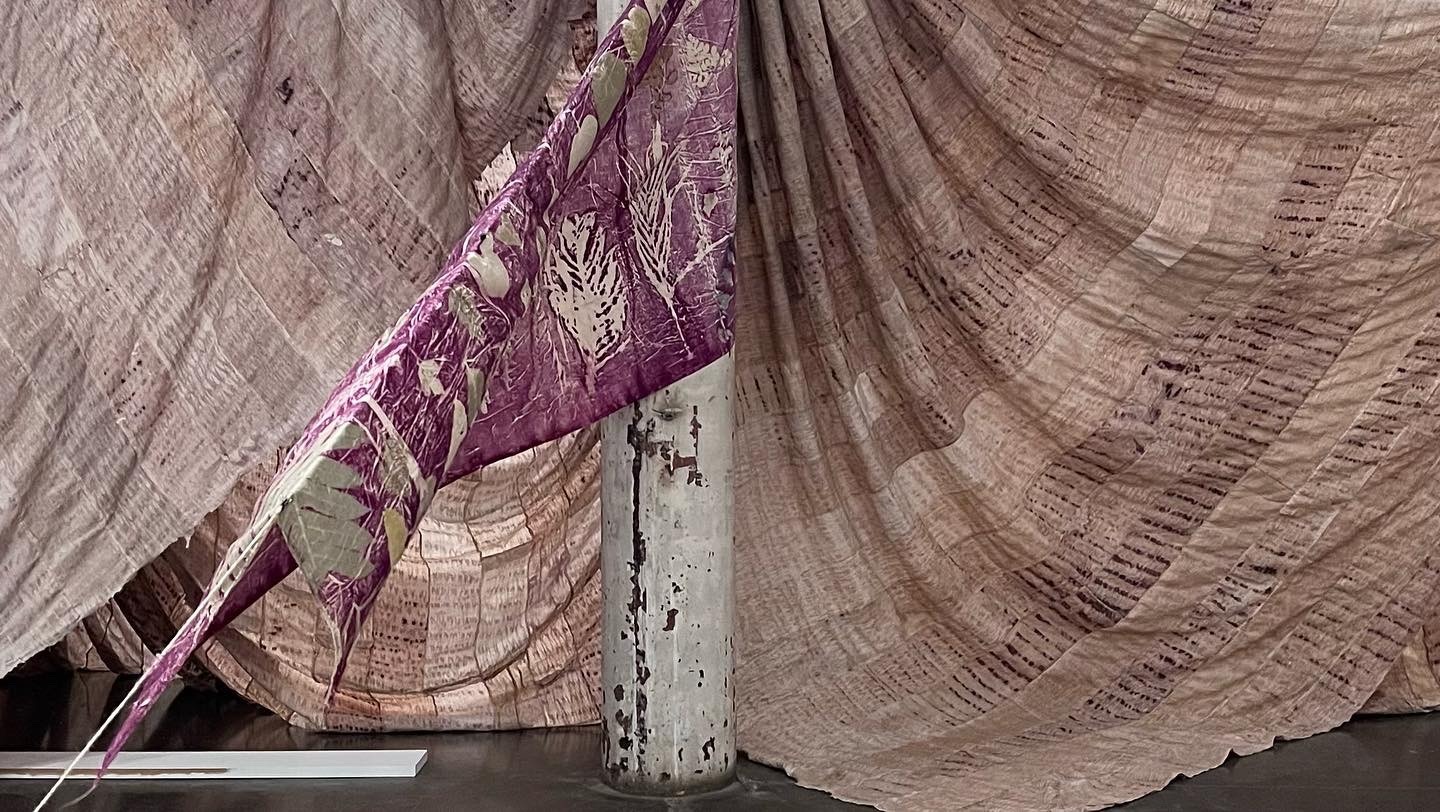Hemali Bhuta in conversation with Dorothée Perret
Time. Decay. Dust. Spice. Textile… These are some of the materials encompassed in the work of artist Hemali Bhuta, who maneuvers sculptural arrangements in response to site-specific spaces with subtle grace—the four walls of a gallery or an open field in plain nature. With the exhibition Aha! at Project 88 in Mumbai (open through October 31), Bhuta continues a narrative that started about five years ago with Subarnarekha (La ligne d’or) (2017) at the Centre International d’Art et du Paysage de Vassivière, and continuing in New York with and the epic did not happen! (2021) at Galerie Ceysson & Bénétière.
As the curator Anne Couillaud, a close collaborator with the artist, voices in her new essay “About Love: An Offering”:
Three chapters—and their sensoria—are coming together in a single locus, closing a cycle in Mumbai after Vassivière and New York.
An artist that shuffles things, processes and timelines.
A consistent and uncompromising engagement with materials.
What is brought forth this time in the making, unmaking and remaking?
We are told most of the stories around gold and lac suggest death.
Lac-filled gold bangles…
The absence of visual narrative does not mean there is no narrative.
In my mind, I do know that they meet at some point. In the landscape, due to the landscape and also due to my encounters with the landscape and the people. — Hemali Bhuta1
By summoning these past works and fragments, and assembling them in this concise way, a sort of archive is constituted. Though, somehow, the gallery space becomes their place of revival and their repository at the same time… at least for a moment… One wonders if this chapter will be the works’ last stop…2
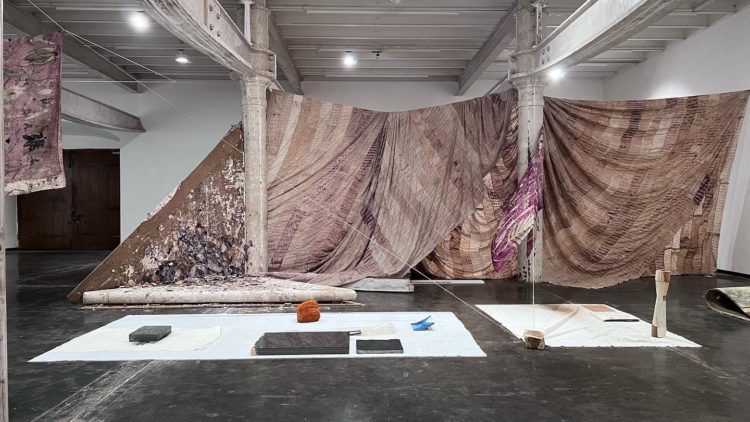
Anti-capitalist and feminist examinations
Dorothée Perret:
In the show and the epic did not happen! there is a sense of movement, yet the action itself is not rendered visible. With the work My pulse is beating and my veins throbbing and in wonder, my song bursts forth (2021) we see fallen parts of the piece exhibited on the wall—lac wax, dried leaves, dust—collected on the floor like refuse. A craziness fills my mind (2021) is a large piece of stitched together cloth you had hung from a two-story building in India, and then presented folded in multiple layers on the floor of the gallery. These actions suggest the work takes a certain time, shuffled places to be created and maybe not even finished. How are these invisible actions part of the work exhibited?
Hemali Bhuta:
Yes, time is a very crucial factor in working the works, in learning to learn. And as learning/working is a continuous activity, either working on something, with something, with someone, with the self, on the self and this is at all times in a given space and keeps shifting and making shifts as it /we traverse through different spaces. So much gets hidden and only so much gets revealed. Some things emerge and others fall out.
In the continuousness of time, there are moments of being held together, sometimes in love, in embrace, and other times in conflict, in war. These are feelings to be felt, invisibility is to be felt in what is made visible. The travel is to be felt.
To think of the feather as a material is to recognize that it has grown along with the body of the bird of which it was an integral part, mingling with the air in flight. In every case, by treating these erstwhile objects as materials, we rescue them from the cul-de-sac into which they had been cast and restore them to the currents of life.3
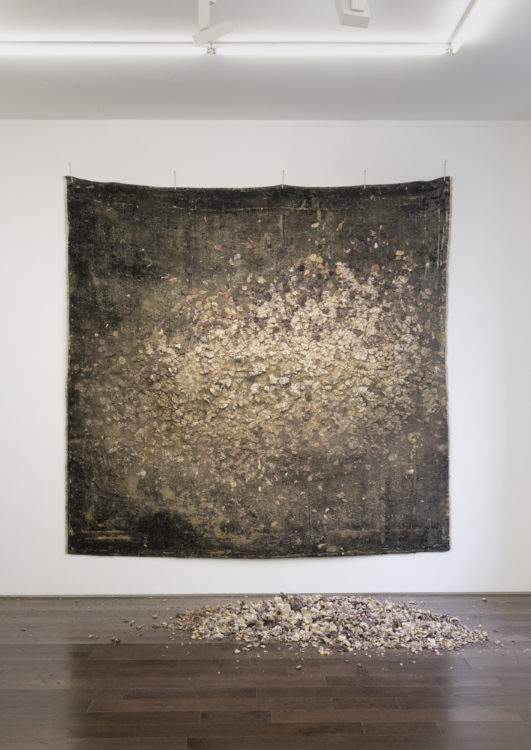
Are the adverse conditions and fragility found in the work a counterpoint—a method to escape the obvious mechanisms of art making?
Escape as a form of self-discovery. Rescue the making, the maker, and the made from the pressures and the fears of uncertainty, insecurity, and expectations most importantly.
Textile and soft fabrics recall craft traditions of weaving and sewing usually attributed to women’s work and domestic life. Yet the way you make subtle use of these political components transcends the value (market) and place (decoration) of the art object by offering possibilities of otherness and by leaving things unresolved. Can you talk about your interest in creating different paradigms and transforming historical narratives?
All work is domestic and everything domestic is work. This approach tries to resolve our understanding of many of the hierarchies of roles, status in the society thereby attempting to deflect the created value systems. We, at our S.O.I.L community center in Goa, are trying to shift these very paradigms of gender, of what education needs to be. Is it “about reading, writing, mathematics or is it for human flourishing, for peace and for happiness, where we can cultivate good inner qualities of compassion, love and patience. Only then we can bring about change.”4
I do refer to the narratives from the past and am conscious of what it means to be using, at times imitating, a particular gesture, a particular knowledge or practice in current times. I see it more as a pedagogical approach, to trace a path that others can follow but moreover make new pathways.
Thinking of a friend and Rainer Maria Rilke in Pathways:
Understand, I’ll slip quietly
Away from the noisy crowd
When I see the pale
Stars rising, blooming, over the oaks.
I’ll pursue solitary pathways
Through the pale twilit meadows,
With only this one dream:
You come too.
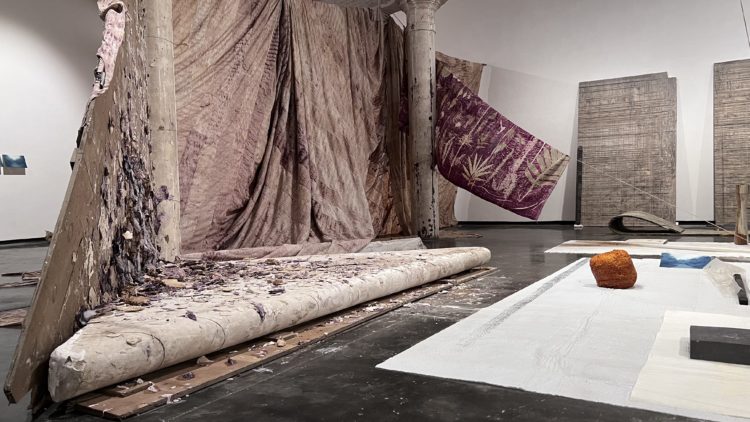
On matter, form, and spirit
The use of natural materials such as lac, silk, wool, cotton, and bird droppings reenforces the transformation of the work through alteration, restoration, care, and uncare. How much of it do you control or leave to chance while making an art object?
I believe in the purpose of synchronicities, and that they are not merely strange coincidences, or chance encounters, but have a deeper meaning, that to bring attention inwardly, to offer a sign, a direction, an insight that we can take advantage of what is being offered. So, my going on a trip with my friend along the river Subarnarekha in search for gold, this trip and her company lead me to explore the relationship between gold, lac and the landscape, the loss of all my data from the travels to the loss of a friend who travelled to the same river and sent me images of the river. Such layered understanding and openness to the mysterious encounters, being aware and sensitive to the invisible forces that are working for us. And all work comes from that space of knowing and feeling.
In Anne Couillaud’s text Two texts (minus one) Now is apart that accompanied the exhibition and the epic did not happen!, there is a passage on the dialectic of material vs. matter. She argues that in your work both material and matter manifests “a porosity […], flattening the accepted divide between raw material and creation.” She sees it as a united divide, where I see it as a poetic force that resists wholeness. How do you comprehend this dialectic?
So beautifully put by you, “a poetic force that resists wholeness.” I am reminded of my college days when our question to our mentors would always be, “When do you know to stop working on a particular painting, how do you know it is complete?” Here I want to bring in the idea of matter in movement, in flux, in variation, it being in the state of becoming, it being porous, it being malleable, it being viscous, it being in an in-between state. And whether there is possibility to create something in this space and state.

On setting and arrangement: A pathway to post-modern productions
You’ve titled each work in the exhibition with a line from “Akash Bhora Surjo Tara,” a song by Rabindranath Tagore. Tagore was a Bengali artist, musician, and poet, associated with the Santiniketan art movement and school, which was brought to light in 1997 by the historical exhibition Santiniketan: The Making of a Contextual Modernism at the National Gallery of Modern Art in New Delhi. Can you explain how you relate to this movement and school?
Tagore’s song “Akash Bhora Surjo Tara” is part of the film Komal Gandhar by Ritwik Ghatak. My concerns align on one hand with the fact that the film brought in aspects such as interdependency of art and life, the IPTA (Indian People’s Theatre Association) and its goal to bring cultural awareness, social responsibility, making art as the expression of struggle, of emancipation. And on the other hand, how Tagore’s songs are situated in Ghatak’s films – on deliberation, in the struggle for survival, in the pain of separation for most families post-independence.
I have always secretly wanted to live and work in Santiniketan but, sadly, every time I planned a trip something never worked out for some reason or the other.In recent times, we as parents are trying to create an environment for our own kids. We as parents, teachers of not just our children but also children of the others from the community, are trying to understand how and what kind of learning needs to be brought to our kids. We, along with a few other parents, have come together to form a Waldorf-inspired community center called S.O.I.L. where the efforts are to give all that is in correspondence with the home life, where things aren’t approached in isolation but rather in relation to the environment, respecting that the human being is continuously in the process of becoming.
Here I would like to bring in what Steiner said: “Children who learn while they are young to make practical things by hand in an artistic way and for the benefit of others as well as themselves, will not be strangers to life or to other people when they are older.”
The way you arrange objects in a room reflects a certain sense of organization. Yet, unlike minimalist practices, it doesn’t seem to follow any “rules.” What phenomena motivate you when you place the work on view for the audience?
“Intuition in action,” to listen to my inner voice, the energies of the space and what you want to bring into the space conceptually and visually, how your body moves in the space and how you want the viewer/receiver of the energy to move in the space. There are certain forces working with you, alongside you, certain situations come into being, are experienced and how these can be embraced and brought into the discourse, where we don’t adhere to the set ways of seeing and experiencing work in the given space, even challenged sometimes, wherein we can propose for the work to become space. These become exercises for me to learn, puzzles to solve, where I put myself in a difficult situation, where I struggle and allow myself the risk to fail, where the proposition of the site being under construction is welcome.
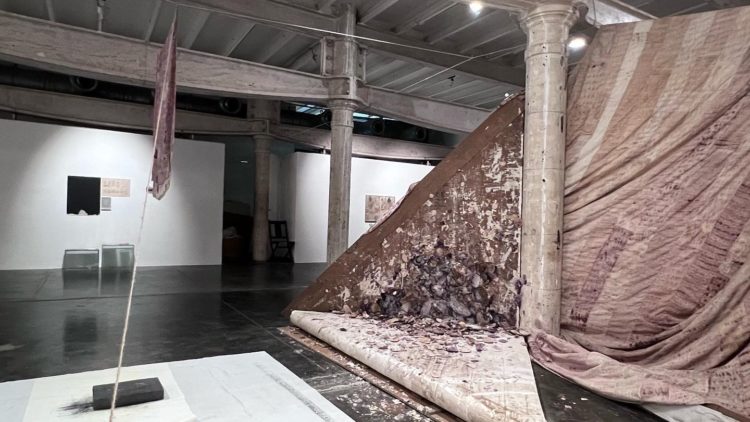
- Hemali Bhuta, correspondence with Aveek Sen and Anne Couillaud.
- Anne Couillaud, “About Love: An Offering,” Project 88 (blog), September 22, 2022, http://project88.in/blog/about-love-an-offering/#
- Tim Ingold, Making: Anthropology, Archaeology, Art and Architecture (London: Routledge, 2013).
- Geshe Lhakdor, transcript from a talk by the Tibetan Buddhist scholar for a group of mentees from Disom: The Leadership School, India (lecture, Library of Tibetan Works).
Hemali Bhuta, from top: Aha!, Project 88, Mumbai, September 23–October 31, 2022, installation views, photograph © Shreyas Karle, courtesy the artist and Project 88 (2); My pulse is beating and my veins throbbing and in wonder, my song bursts forth (2021), lac wax, dried leaves, dust, lac dye, hand ground lac on handmade wool and silk, 96 x 96 inches, photograph © Adam Reich, courtesy of Ceysson & Bénétière; Aha!, Project 88, Mumbai, installation view, photograph © Shreyas Karle, courtesy the artist and Project 88; A craziness fills my mind (2021), cotton cloth with stains of lac hand stitched with cotton threads, dimensions variable, photograph © Adam Reich, courtesy of Ceysson & Bénétière; Aha!, Project 88, Mumbai, installation view, photograph © Shreyas Karle, courtesy the artist and Project 88. Artwork images courtesy and © Hemali Bhuta.

